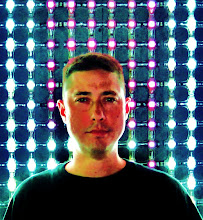Today was all about eating.
Jin, Karine and I had made plans to have a big lunch today with Christian, his mom and his aunt Tess at a local Korean barbecue restaurant. (As Christian and his relatives are leaving for a holiday in the Philippines tomorrow, this is our last chance to see each other.) After imbibing too much last night and waking up with a nasty hangover, though, I wasn't sure I could even make it through a big family meal today.
Luckily, once I started eating I felt fine, and it was some incredible food. I had never experienced Korean barbecue before, but the way it works is, they put a charcoal grill in the middle of your table, give you a bunch of meat and vegetables, and you grill everything yourself. As Jin was the "expert," he did all the grilling while the rest of us watched. He cooked up some mean beef, chicken, pork, potatoes, prawns, and several types of mushrooms. We also had side dishes of salad, seaweed, sweet cakes of sticky rice, and of course, spicy kimchee. It was a ton of food, and everything was really tasty.
Afterwards I was too stuffed and tired to do any sightseeing, so I just came back to Jin's and rested. Later on Jin's friend Raymond came over, who's a very...colorful character, to say the least. He's Chinese, but he lived for several years in San Francisco and New York. All day he kept cracking me up by reciting a litany of every American brand that's made it's way to Beijing: "There's McDonalds, of course, and KFC and Subway...and Century 21, and Nike and Adidas and Haagen Dazs, and Sizzler. Sizzler, how awful is that? And Staples, and Papa John's, and Baskin Robbins...." This continued intermittently well into the night.
As part of today's cook-your-own-meal theme, Jin, Raymond, Karine and I later went out to an authentic Beijing "hotpot" restaurant, which was very interesting, but I have honestly say I didn't enjoy nearly as much as lunch. Instead of a grill, they bring a boiling pot of broth to your table which you add meat and vegetables to for a few minutes before fishing it out. We had lamb, beef, cabbage, mushrooms, and meatballs, along with a few things I was a little more squeamish about. Believe it or not, I actually tried a slice of congealed duck's blood (ugh), but gave a pass to the white and slippery-looking ox throat. Truthfully, it was all rather bland, and as Karine noted, everything had a similar texture--kind of rubbery and squishy. And after we had just about finished, three more of Jin's friends joined us, and ordered many more plates of squishy stuff as they chatted away in Mandarin. I really was a bit worn-out by the end, which came more than four hours after we first entered the restaurant.
But the evening wasn't over, of course. It's Saturday night, which meant more bar- and club-hopping. I was careful not to drink too much this time, although it's hard when people keep buying you drinks! The club crowd was pretty friendly, though--at one bar Karine and I met a girl named Olivia and a guy named Mike from Shanghai on the dance floor, then later at Destination I talked to an English guy who teaches English to German kids in Beijing(?), and a guy named Avi from Wisconsin who's in the army stationed in Korea. When I asked him what he did there, he told me rather cryptically, "things you're not supposed to talk about in China."

